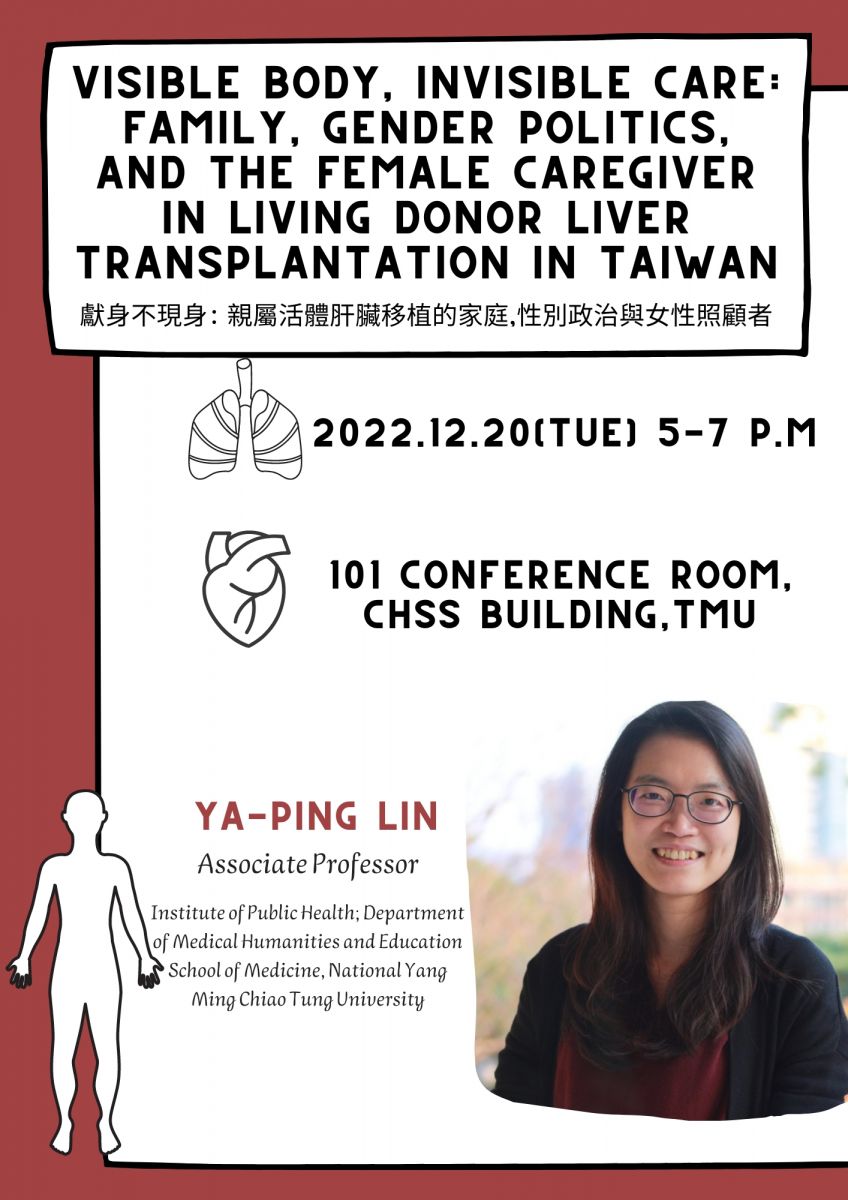
111.12.20醫學人文專題演講《獻身不現身: 親屬活體肝臟移植的家庭、性別政治與女性照顧者》林雅萍副教授(國立陽明交通大學)
Visible Body, Invisible Care: Family, Gender Politics, and the Female Caregiver in Living Donor Liver Transplantation in Taiwan
獻身不現身: 親屬活體肝臟移植的家庭、性別政治與女性照顧者
▲Speaker / Ya-Ping Lin
Associate Professor, Institute of Public Health; Department of Medical Humanities and Education School of Medicine, National Yang Ming Chiao Tung University
林雅萍副教授
國立陽明交通大學公共衛生研究所、
醫學系醫學人文暨教育學科
▲Date ─ 2022.12.20(Tue)5-7 p.m
▲Venue ─ 101 Conference room,CHSS building,TMU
▲Registration ─ Please contact me on Facebook Messenger.
▲Introduction:
Gender imbalance or the gender disparity hypothesis in living organ donation has been discussed in medical anthropology, sociology, and bioethics. However, the major focus is still on the gender ratios between donors and recipients, namely, women are more likely to be living organ donors than men, and possible explanations for that. This article, based on my qualitative-ethical study on intra-familial living donor liver transplantation (LDLT) at Chang Gung Memorial Hospital, articulates how the division of care work in family is arranged in terms of conventional gender norms and role expectations, and in turn has a great impact on framing the ethical significance of LDLT and shaping the communication and decision-making process in the socio-cultural context of Taiwan. I situate this study within a broader understanding of donor–recipient–caregiver relationships dynamics to reveal that LDLT is a gendered experience, intertwined with socio-economic conditions, cultural and social norms, gender roles, and the division of labor in the household. Furthermore, the article aims to make visible the hidden role female caregiver plays in LDLT to argue that exploring the multiple care work of the invisible caregivers can enrich the analysis of gender issues in LDLT even if there is no clear gender disparity. As shown in the study, family caregivers, mostly the mother or wife, who are deemed to lack decision-making authority, often serve as mediators and coordinators throughout the communication and decision-making process. In addition, they not only take care of both the recipient and donor before and after the surgery but also feel responsible for the well-being of the whole family, which requires a considerable amount of time, effort, and emotional devotion. Finally, I also illustrate gender inequities in living organ donation with a case study of an unmarried female donor with overloaded caregiver burden and financial vulnerability.






